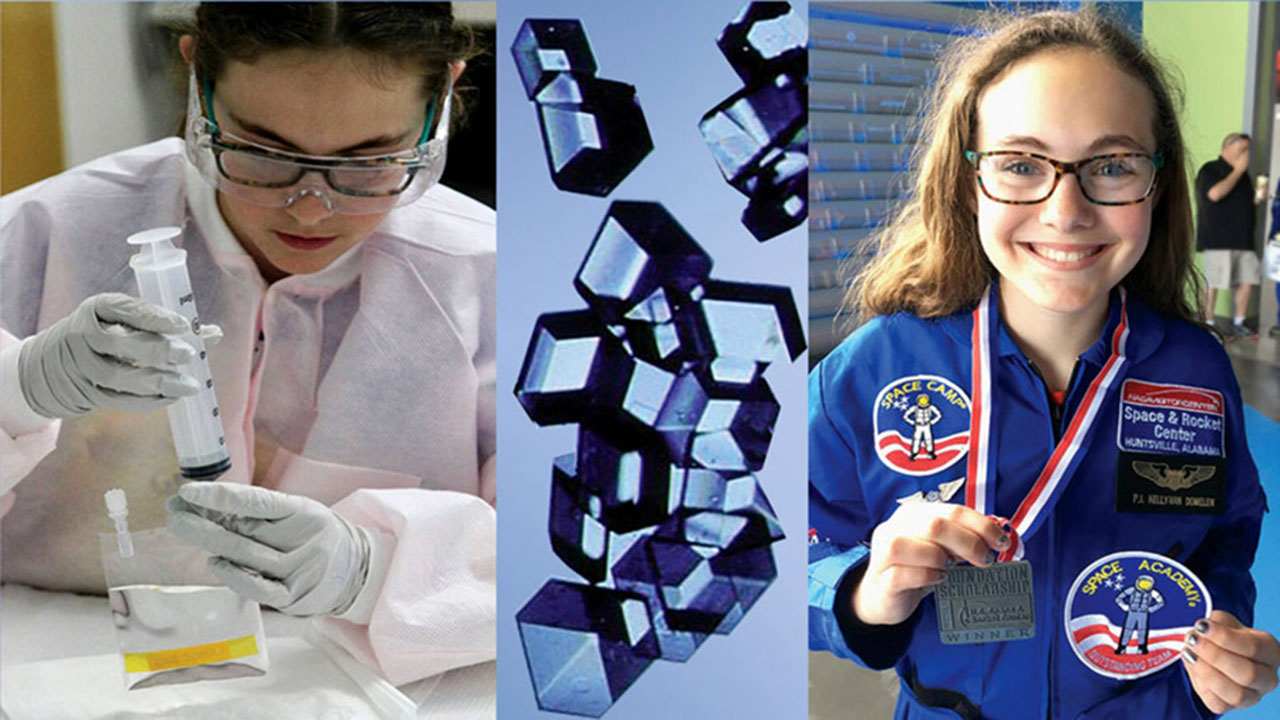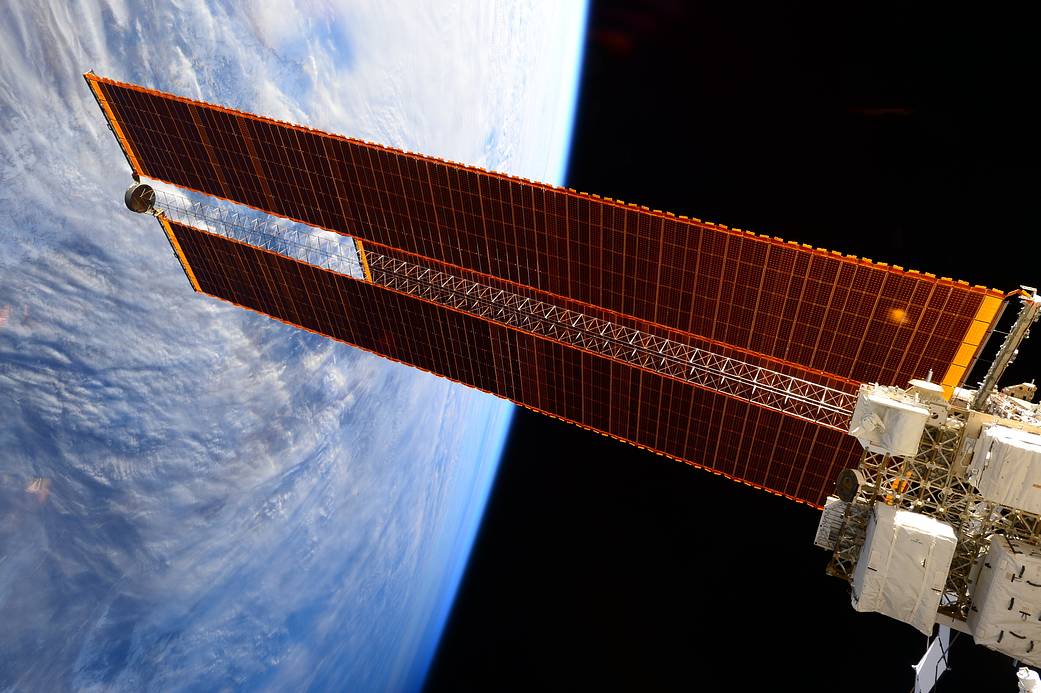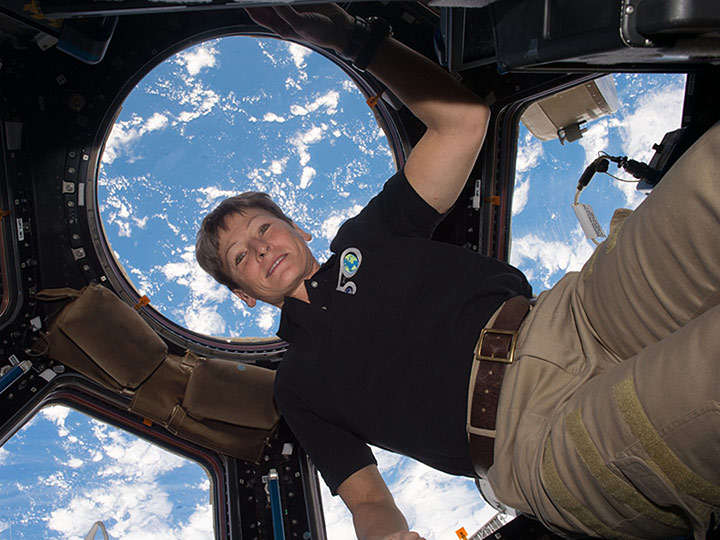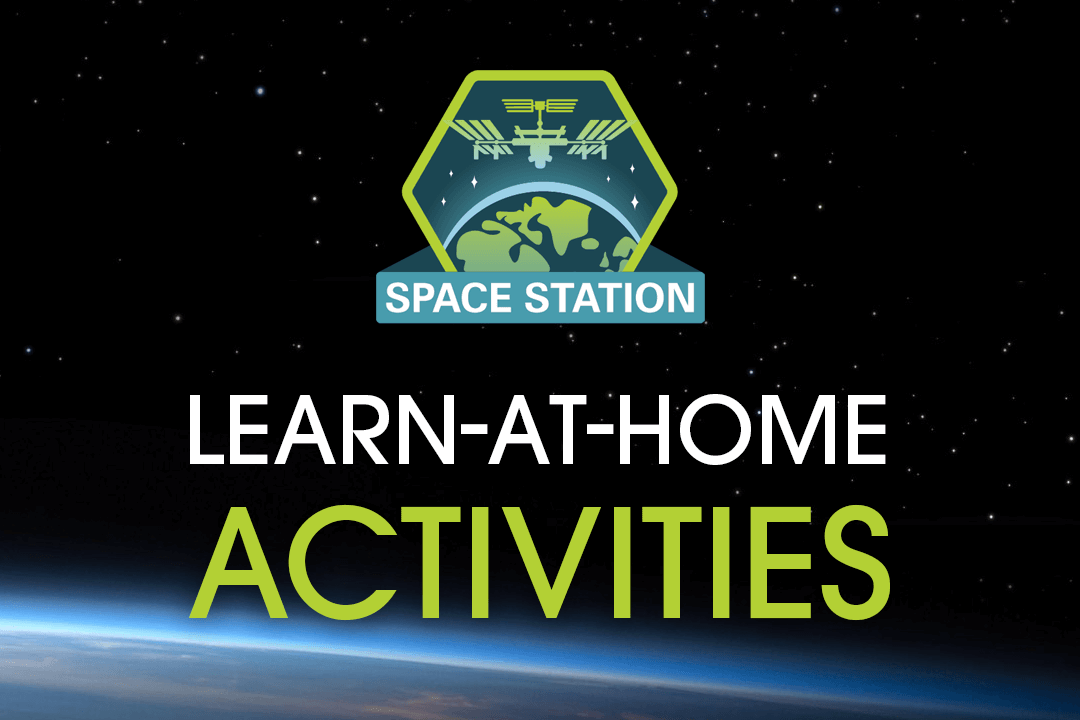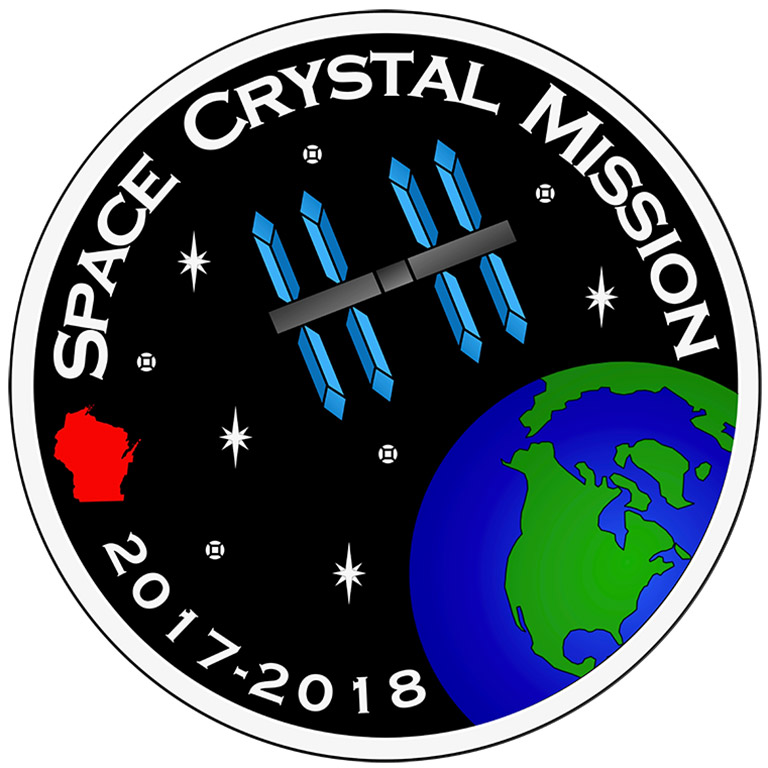
Payton designed the mission patch for her team's experiment.
My name is Payton Kelly-VanDomelen, and I am a 13-year-old homeschool student from Sun Prairie, Wisconsin. I love science and outer space, and I have always dreamed of being involved in space in some way.
Last year, I was a winner of the 2017 Wisconsin Crystal Growing Contest, hosted by the University of Wisconsin-Madison Chemistry Department. As a result, I earned the 2017-2018 Space Crystal Prize, sponsored by the Center for the Advancement of Science in Space (CASIS).
This mission allowed me to use the engineering design process and scientific method to design crystal growing experiments that were sent to the International Space Station (ISS) in April 2018. The compounds I worked with were cupric sulfate pentahydrate (CuSO4 • 5H2O) and potassium dihydrogen phosphate (KH2PO4), which were crystallized using the thermal gradient technique (where the temperature of the solution is lowered, causing crystals to nucleate). I also designed the Space Crystal Mission patch—it even glows in the dark!
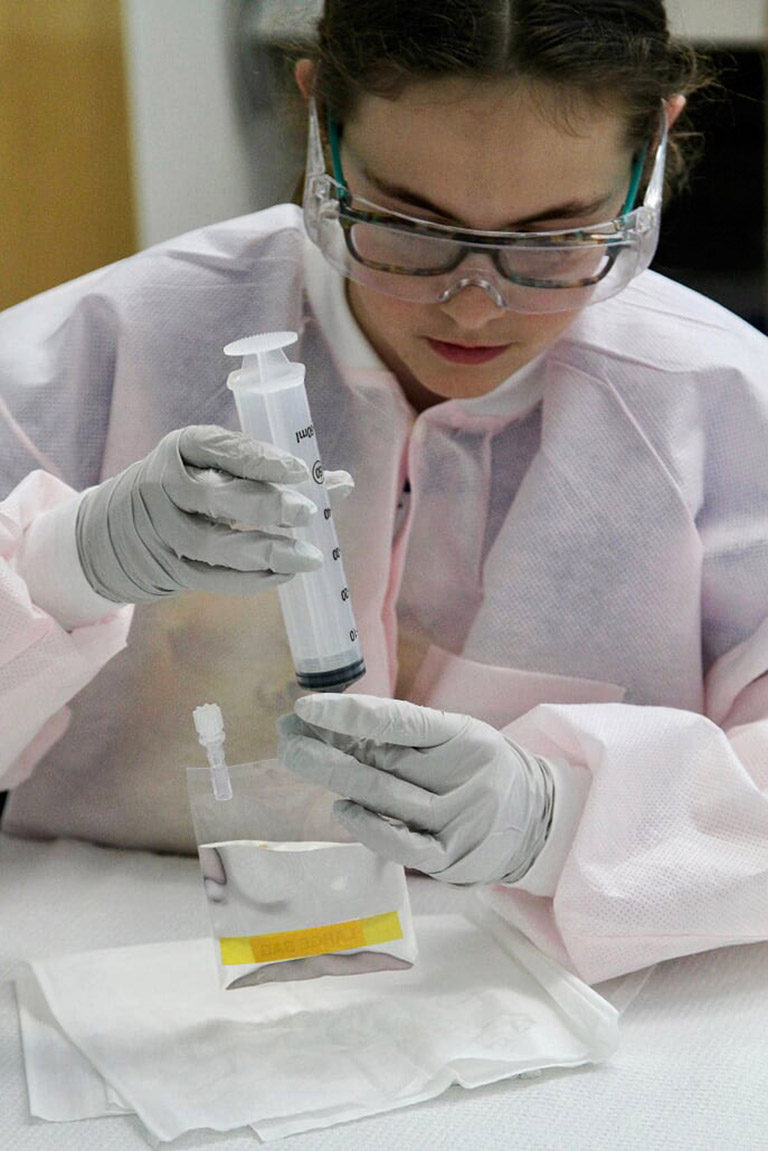
In the Space Life Sciences Lab near Kennedy Space Center, Payton prepared solutions for crystallization.
Media Credit: Image courtesy of Cheryl Kelly-Van Domelen
My team traveled to Florida to watch the launch. On launch day I gave two presentations at the Kennedy Space Center Visitor Complex: one was a talk on stage in the Journey to Mars theater, and the other was a scientific poster presentation in the Saturn V building. Then we went to the Banana Creek Launch Viewing Site, where we had reserved seats to see the rocket launch. Watching the culmination of a year of intense learning and hard work launch into space was surreal and exhilarating! I couldn’t believe that my experiment was going to be performed by astronauts onboard the ISS!
One of my favorite parts of this experience was that my team members and I got to prepare the experiments at the Space Life Sciences Lab at CASIS, and we were treated as professionals the entire time. We also got to Skype with April Spinale, CASIS payload integration specialist, four times, which allowed us to view the astronauts performing the experiment at different stages. When some of the crystals wouldn’t form, we got to provide feedback to the astronauts on how to solve the problem!
I really enjoyed analyzing the space crystals once they returned to Earth. We visually inspected them using a Leica microscope, which revealed that the crystals grown in space appeared to have a smoother surface than the Earth-grown crystals. We also measured the crystals’ melting points, which indicated that there were no major differences in chemical composition. Single-crystal X-ray diffraction, Raman spectroscopy, and thermogravimetric analysis were used to examine the crystals on a molecular level.
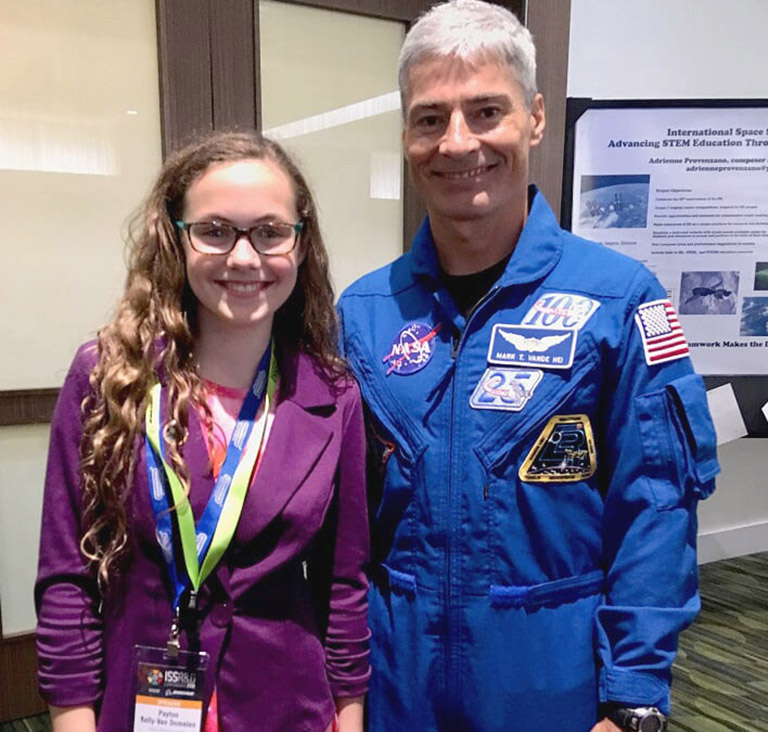
Payton Kelly-Van Domelen met NASA astronaut Mark Vande Hei at the 2018 ISS Research & Development conference.
Being involved with the Wisconsin Space Crystal Mission in conjunction with CASIS has presented many opportunities for me. I recently was selected to be a plenary presenter at the 2018 ISS Research and Development Conference, which was held in San Francisco in July. I was so excited to attend the conference! In addition to being a speaker, I got to present a scientific poster that my teammate and I designed about the experiments. In addition, I got to meet and ask questions to astronauts, including Mark Vande Hei, Drew Feustel, Cady Coleman, and Randy Bresnik. I enjoyed networking with NASA professionals, and I learned a lot through keynote speakers and technical sessions. The conference was a fantastic experience, and I hope I get to go again next year!
In addition to all these wonderful opportunities, I had the honor of receiving a full-tuition academic scholarship to attend Space Academy in Huntsville, Alabama, in August 2018. I loved it there, and I learned so much and had lots of fun. My favorite part was riding all the different simulators to feel what astronauts experience in different parts of their missions. I also got to go on simulated missions to the moon and the ISS and make friends from all around the world! Our team was excited to win the “Outstanding Team” award at the conclusion of Camp. I liked it so much that I’m going again next year!
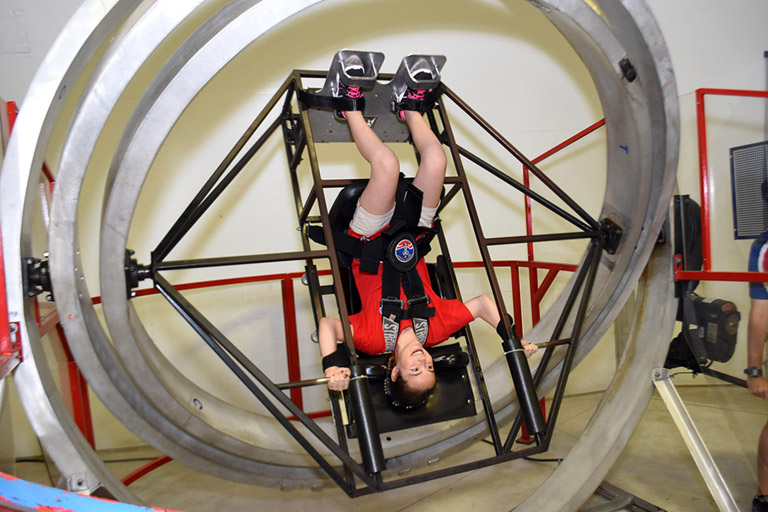
Payton tests her ability to tolerate extreme accelerations on the Multi-Axis Trainer at Space Camp.
For the 2018-2019 Wisconsin Space Crystal Mission, I am currently designing a crystal-, science-, and space-inspired activity book and graphic novel. Our team will also be establishing a team blog and social media accounts. In addition, I am preparing a presentation to educate our community at the local library about all of these wonderful experiences and opportunities.
I have always loved every aspect of science, technology, engineering, art, and math (or STEAM), and I want to continue pursuing a career in that area in the future. I am even taking classes through the Johns Hopkins Center for Talented Youth and the University of Wisconsin Colleges Online. The Wisconsin Space Crystal Mission has presented so many opportunities to me and has been an unfathomable experience that I will never forget!


